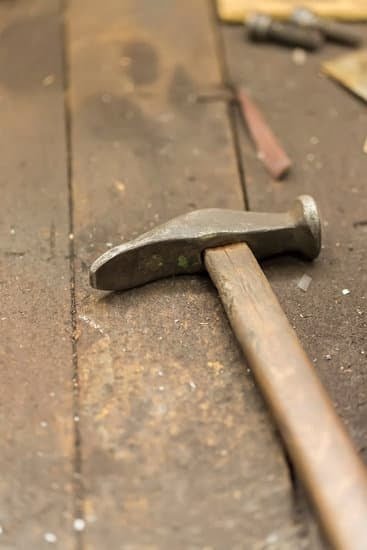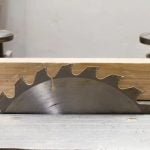Are you a woodworking enthusiast wondering, “Does super glue work on wood woodworking?” Super glue is a popular choice for bonding wood due to its quick drying and strong adhesive properties. In this article, we will explore the use of super glue in woodworking, including the types suitable for wood, application tips, projects that benefit from it, and its advantages and disadvantages.
When it comes to woodworking, using the right type of adhesive is essential for a successful project. Super glue, also known as cyanoacrylate adhesive, has been widely used in woodworking for its ability to create strong and durable bonds on wood surfaces. Understanding how to properly use super glue can greatly enhance the quality and durability of your woodworking projects.
As we delve deeper into this topic, we will discuss the different types of super glue that are suitable for wood bonding, provide helpful tips for applying super glue to wood surfaces, and examine common woodworking projects that can benefit from the use of super glue. Additionally, we will take a look at the advantages and disadvantages of using super glue in woodworking as well as explore alternative options for wood bonding.
Whether you are a beginner or experienced woodworker, this article will serve as a valuable guide to understanding the effectiveness of super glue in woodworking.
Types of Super Glue Suitable for Wood
Super glue, also known as cyanoacrylate adhesive, is a popular choice for bonding wood in woodworking projects. However, not all super glues are suitable for use on wood. When choosing a super glue for woodworking, it is important to select one that is specifically designed for use on porous materials such as wood.
One type of super glue that is commonly used for woodworking is the Cyanoacrylate gel. This type of super glue has a thicker consistency than regular super glue, making it easier to control and less likely to run before it sets. Another suitable option is the polyurethane-based super glue which forms a strong and flexible bond with wood.
When using super glue on wood in woodworking, it is essential to consider the porosity and moisture content of the wood. For hardwoods or dense woods, a higher viscosity super glue should be used to ensure a strong bond. On the other hand, softwoods or more porous woods may require a thinner viscosity super glue for better absorption and bonding.
In addition to considering the type of super glue suitable for wood, it is also important to take into account the setting time and curing time of the adhesive. Some formulations of super glue are designed to set quickly within seconds, while others may have a longer open time for repositioning parts before setting. Understanding these factors will help ensure successful bonding when using super glue on wood in woodworking projects.
| Type of Super Glue | Suitable Wood Types |
|---|---|
| Cyanoacrylate gel | Hardwoods or dense woods |
| Polyurethane-based | Softwoods or porous woods |
Tips for Applying Super Glue to Wood
When it comes to using super glue for woodworking, applying it correctly is crucial to ensure a strong and long-lasting bond. Here are some tips for using super glue on wood:
1. Surface preparation: Before applying super glue to wood, it’s important to ensure that the surfaces are clean and free of any dust, debris, or oils. Sanding the surfaces can improve the adhesion of the super glue.
2. Use in moderation: Super glue is known for its fast-acting and strong bonding properties, so a little goes a long way. Apply a small amount of super glue to one surface, then press the two surfaces together firmly for a few seconds to allow them to bond.
3. Clamping: In some cases, using clamps or weights can help ensure that the glued surfaces are held together tightly while the super glue sets. This can be especially helpful for larger or more complex woodworking projects.
It’s essential to follow these tips when working with super glue on wood woodworking projects to ensure a successful and durable bond. These tips can help maximize the effectiveness of the super glue and create strong, reliable bonds for various woodworking projects.
Common Woodworking Projects That Can Benefit From Super Glue
Woodworking projects can greatly benefit from the use of super glue due to its strong bond and quick-drying properties. Whether you are a beginner or an experienced woodworker, here are some common woodworking projects where super glue can be particularly useful:
- Joinery: Super glue is perfect for bonding small joints and cracks in wood, such as those found in furniture or decorative pieces.
- Scroll Saw Projects: When working with intricate scroll saw designs, using super glue to bond delicate pieces together can ensure a secure fit without the need for clamping.
- Woodturning: Super glue is great for stabilizing and strengthening turned wood pieces, such as bowls and pens, especially when dealing with fragile or uneven grain patterns.
- Inlay Work: Whether it’s creating intricate designs or repairing existing inlays, the quick-setting nature of super glue makes it an ideal choice for this type of woodworking project.
Using the right type of super glue and applying it properly can enhance the quality and durability of these woodworking projects.
When considering whether super glue works on wood in woodworking projects, keep in mind that it provides a strong bond but may not be suitable for every application. Understanding when and how to use super glue on wood will ensure successful outcomes for your woodworking endeavors.
Advantages and Disadvantages of Using Super Glue in Woodworking
When it comes to using super glue in woodworking, there are both advantages and disadvantages to consider. Understanding these can help woodworkers make informed decisions about whether or not to use super glue for their projects.
Advantages
One of the main advantages of using super glue on wood in woodworking is its quick drying time. Unlike other adhesives that may take hours or even days to set, super glue bonds very quickly, allowing for efficient and speedy project completion. Additionally, super glue creates a strong bond that can withstand heavy loads and does not require clamping in most cases.
Another advantage of using super glue is its versatility. It can be used on a wide range of wood types, making it a convenient option for various woodworking projects. Whether working with hardwoods, softwoods, or other types of wood, super glue can provide a reliable bond.
Disadvantages
Despite its benefits, there are also some drawbacks to using super glue in woodworking. One disadvantage is that it does not allow for much flexibility once bonded. This means that if the wood pieces need to be adjusted after gluing, it may be difficult to do so without causing damage.
Additionally, super glue can be tricky to work with due to its thin consistency and fast setting time. It requires careful application to avoid spills or accidental bonding. Lastly, while it creates a strong bond, it may not be the best option for load-bearing joints or long-term durability in certain woodworking applications.
Alternatives to Super Glue for Wood Bonding
When it comes to bonding wood in woodworking projects, super glue is a popular choice for its fast and strong adhesion. However, there are also alternatives to super glue that may be better suited for certain woodworking needs.
Epoxy
Epoxy is a popular alternative to super glue for wood bonding, especially when a stronger bond is required. Epoxy has high tensile strength and can fill gaps between uneven surfaces. It also cures more slowly than super glue, giving woodworkers more time to reposition pieces before the bond sets. Epoxy is commonly used in furniture making, laminating, and in applications where a durable and long-lasting bond is necessary.
Wood Glue
Wood glue, also known as carpenter’s glue, is specifically designed for use with wood materials. It provides a strong bond and dries clear, making it ideal for woodworking projects where the adhesive may be visible. Wood glue has a longer open time than super glue, allowing for adjustments during the assembly process.
Cyanoacrylate Accelerator
For those who prefer the quick setting time of super glue but need greater strength, cyanoacrylate accelerator can be used as an alternative. This product can be applied to one surface before applying the super glue to the other surface. It speeds up the curing process of the super glue while still providing a strong bond on wood materials.
For woodworking projects that require specific bonding qualities or have unique design requirements, considering these alternatives to super glue can help achieve better results. Each type of adhesive has its own advantages and limitations, so selecting the right one will depend on the specific needs of the project.
How to Properly Remove Super Glue From Wood
When working on woodworking projects, it’s not uncommon to accidentally get super glue on the wood. However, removing super glue from wood can be a tricky task. There are several methods that can be used to properly remove super glue from wood without causing damage to the surface.
One common method for removing super glue from wood is using acetone. Acetone can be found in nail polish removers and paint thinners. To use this method, soak a cotton ball or swab in acetone and gently dab it onto the affected area.
Allow the acetone to sit for a few minutes before attempting to scrape or peel off the softened glue. It’s important to note that acetone can potentially damage certain finishes, so it’s crucial to test this method on a small, inconspicuous area of the wood first.
Another method for removing super glue from wood involves using a mixture of water and mild soap. By soaking the affected area in warm, soapy water, it may be possible to soften the glue and gently scrape it off with a plastic scraper or putty knife. This method is less aggressive than using acetone and is generally safer for delicate wood surfaces.
In some cases, sanding the affected area may also help to remove dried super glue from wood. Using fine-grit sandpaper, carefully sand the glue until it begins to lift from the surface of the wood. This method should be used as a last resort, as sanding may affect the finish of the wood and require additional refinishing work.
Overall, knowing how to properly remove super glue from wood is essential for any woodworking enthusiast. By being mindful of these techniques and taking proper precautions when working with super glue, it’s possible to effectively clean up any accidental spills or mishaps during woodworking projects.
Real-Life Examples and Success Stories of Using Super Glue on Wood in Woodworking
Super glue, also known as cyanoacrylate adhesive, is a popular choice for bonding wood in woodworking projects. Many woodworkers have found success using super glue to create strong and durable bonds in their creations. Whether it’s repairing a chair leg or creating intricate wooden sculptures, super glue has proven to be an effective tool in the woodworking arsenal.
Here are some real-life examples and success stories of using super glue on wood in woodworking:
- Repairing broken furniture: Many woodworkers have used super glue to repair broken chair legs, table tops, and other wooden furniture. The fast-drying nature of super glue allows for quick and easy repairs, saving time and money on replacing the entire piece of furniture.
- Creating wooden crafts: Woodworking enthusiasts have used super glue to bond small wooden pieces together to create detailed crafts such as jewelry boxes, picture frames, and decorative carvings. Super glue provides a strong bond that can withstand the test of time, ensuring that these handcrafted pieces last for years to come.
- Building musical instruments: Instrument makers often use super glue to bond the delicate wooden components of guitars, violins, and other musical instruments. The precision and strength of super glue make it an ideal choice for creating seamless connections between the various parts of these intricate instruments.
These real-life examples demonstrate the versatility and effectiveness of using super glue on wood in woodworking projects. With the right techniques and application methods, woodworkers can achieve outstanding results when incorporating this adhesive into their craft. Additionally, the ease of use and accessibility of super glue make it a popular choice for both professional woodworkers and hobbyists alike.
Conclusion
In conclusion, super glue can be a highly effective tool for bonding wood in woodworking projects. When used correctly, super glue creates strong and durable bonds that are perfect for a wide range of woodworking applications. However, it’s important to note that not all types of super glue are suitable for use with wood, so choosing the right one is essential for success.
When considering whether or not to use super glue on a woodworking project, it’s important to weigh the advantages and disadvantages. Super glue dries quickly and creates a strong bond, making it ideal for small repairs and intricate projects. On the other hand, it can be less forgiving if mistakes are made during application, and it may not be the best choice for larger-scale wood bonding.
Additionally, while super glue is a popular option for wood bonding in woodworking, there are also alternative adhesive options available such as wood glues and epoxies. These alternatives may offer different advantages depending on the specific needs of your project. It’s always a good idea to consider all available options before making a decision on which adhesive to use. Overall, when used thoughtfully and carefully, super glue can indeed be an effective tool for bonding wood in woodworking.
Frequently Asked Questions
Is Super Glue Good for Wood on Wood?
Super glue can be effective for bonding wood to wood, but it is important to ensure that the surfaces are clean and properly aligned before applying the adhesive. It works best on smooth, non-porous surfaces, so rough or unfinished wood may require a different type of adhesive for a stronger bond.
What Is the Strongest Glue for Wood to Wood?
The strongest glue for wood to wood would be epoxy resin. Epoxy provides a very strong and durable bond between wood surfaces, making it particularly well-suited for heavy-duty or load-bearing applications. It also has good resistance to moisture and temperature changes, making it a reliable choice for outdoor or indoor use.
How Long Does Super Glue Take to Dry on Wood?
Super glue typically dries very quickly on most surfaces, including wood. Depending on the specific formulation of super glue being used, it may take only seconds to a few minutes to fully set and create a strong bond between the wooden surfaces.
However, it’s important to allow sufficient time for the glue to cure completely before subjecting the bond to any stress or pressure.

Hi everyone! I’m a woodworker and blogger, and this is my woodworking blog. In my blog, I share tips and tricks for woodworkers of all skill levels, as well as project ideas that you can try yourself.





